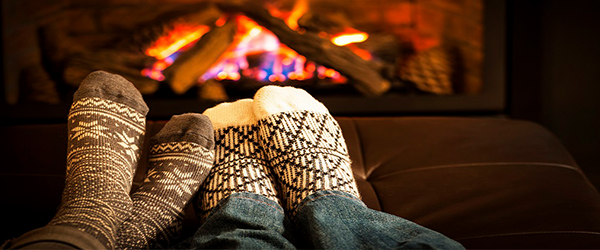How to Keep Your House Warm in Winter

As cooler temperatures settle in, you might be ready to crank up the heat, but keeping your home warm in the dead of winter often means a higher energy bill. The good news: There are steps you can take this season to avoid the potential cost spike during the winter months.
Why natural gas prices go up in winter
Most furnaces are powered by natural gas, which is why most homeowners – and businesses – increase their natural gas consumption in the winter. What some people don't realize is that when temperatures drop, people often experience an increase in the rate they pay per unit of natural gas consumed.
That's because you're not the only one using more natural gas in the winter. Almost everyone's consumption increases when it's colder and, when winter weather takes an unexpected turn, that increase in demand can drive up price.
And you've likely noticed that natural gas prices have increased significantly in recent months: This fall, a nearly 7-year cap on energy prices quickly vanished due to changes in U.S. natural gas production, export growth and other factors.
2021 and 2022 winter forecast
Fortunately for consumers, this winter isn't likely to be an incredibly cold one. The National Oceanic and Atmospheric Administration's winter outlook (December 2021 to February 2022) shows warmer-than-average conditions across the southern U.S. and most of the eastern U.S., while areas including the Pacific Northwest and the Northern Plains will see below average temperatures.
"La Niña conditions are expected to be a big driver of temperatures in the U.S. throughout the upcoming winter," said Brent Rice, IGS Energy's meteorologist. "Warmer than normal temperatures are anticipated in the southern U.S., with near to slightly above normal temperatures in the Midwest and East."
5 easy ways to keep your house warm this winter
There are a few things you can do to save money on your heating bill this winter:
- Ensure your home is properly insulated. Drafts let cold air enter your home – and require your furnace to run more often.
- Install weather stripping around doors. If your doors are older or don't close flush with the jamb, you could be losing quite a bit of heat.
- Put up plastic window coverings. These do-it-yourself kits can really cut down on the amount of cold air that creeps in around your windows.
- Get your furnace inspected. It might not be running as efficiently as it could, and that could be costing you money.
- Get a smart thermostat. These devices allow you to program when your furnace warms your home instead of just running it 24/7.
This to-do list should help you protect your budget by shaving a few dollars off your winter heating bills.
Interested in more? Learn how the changing seasons can affect the price of natural gas.